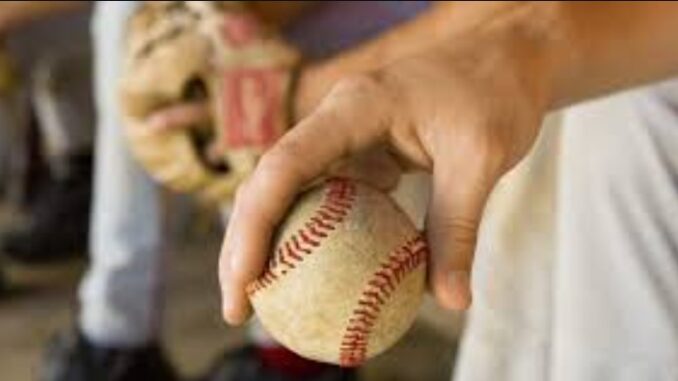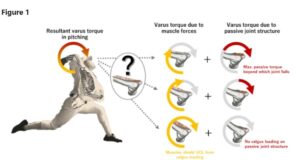
In the midst of the enthusiasm that spring training brings, a new report on pitcher injuries must be taken seriously at all levels of baseball, not just in major and minor league clubhouses.
Major League Baseball published the findings of a thorough research in December 2024 that included interviews with more than 200 specialists to look into the prevalence of injuries to pitchers and provide perspectives from the domains of athletic training, biomechanics, coaching, medicine, and orthopedic surgery.
The gathering of experts, which included agents, executives, and former big league pitchers, acknowledged that this is a crucial first step in addressing an injury epidemic and that a number of best practices will be needed to affect change across the sport.
Although the main causes of ulnar collateral ligament tears are velocity, misuse, and lack of rest, pitch design and exerting maximal effort for brief periods of time are also risk factors. Although pitching is a sequence of violent and unnatural actions that put an unusual amount of strain on the elbow, its beauty is expressed via art and science.
For pitchers, reaching triple-digit velocity has become an unhealthy fixation. Pitchers are working urgently during the winter to expand their repertoire while keeping a close watch on spin rates and vertical breaks as they balance the danger of injury against the potential financial gain.
Major League Baseball understands the need of further research in biomechanics, injury prevention, and conditioning, and a new paradigm is required to return significance to starting pitchers with a focus on health and durability. Data from the study, as reported by David Adler of MLB.com, indicates that during the previous five seasons (2020–2024), there were 191 big league ulnar collateral ligament operations and 1,026 minor league procedures. There are 120 full-season minor league affiliates and 30 big league ball teams that are not the only ones affected by the pitching injury epidemic. It is a far more serious issue at the high school, college, and juvenile levels. When velocity has negatively impacted coaches’, parents’, and young athletes’ decision-making, a trickle-down effect is taking place.
Injuries to Pitchers Outside of Major League Baseball
Previously associated with left-handed pitcher Tommy John, a ruptured ulnar collateral ligament is now a routine occurrence in baseball at all levels. In high school and collegiate baseball, elbows with noticeable scarring have become commonplace. The most unsettling thing is how many people dismiss it as a cost of being a pitcher who wants to play professionally, while displaying an incredible level of expertise when describing the distinctions between reconstruction surgery and internal braces.
Technology-Based Response To Pitcher Injuries

The largest baseball and softball platform and scouting service in the world, Perfect Game, want to support MLB’s research initiatives in identifying and minimizing pitcher injuries. By adopting health technologies, they also hope to establish a new benchmark in young sports. Young athletes competing in Perfect Game showcases will have their arm health evaluated through a collaborative partnership with ArmCare.com. Everyone will receive a one-year Premium membership to the ArmCare app in addition to a comprehensive report that documents data and information to improve performance and lower the risk of injury.
Former high school and collegiate coach Jered Goodwin, vice president of scouting at Perfect Game, believes that the injury epidemic is primarily caused by the pursuit of velocity rather than pitch counts. Goodwin uses educational resources to emphasize development and wellness in his work with Perfect Game. “Our goal is to provide the resources and collaborate with the top brands,” Goodwin stated. Young athletes who are obsessed with data and velocity present difficulties for coaches and parents. Goodwin wants young athletes to realize that they are not invincible and that in order to achieve at their best, they must embrace the value of rest and self-evaluation.
As he watched Hall of Fame right-handed pitcher Greg Maddux take the mound at Atlanta-Fulton County Stadium for his first major league game, Goodwin thought back. Maddux has established himself as the gold standard in pitching technique in the current era. The scoreboard’s primary focus at the time was on balls, strikes, and outs. As we proceed, we see several velocity counters, as well as generated horizontals and vertical breaks,” Goodwin added. A common feature of the ballpark experience for young players hoping to follow in the footsteps of their heroes is data and velocity.
It all comes down to education and preventing injuries with rest and good pitching technique. While reducing velocity, regulating workloads, and controlling pitch counts are good starting points, coaches and parents also need to learn more from reliable health experts. Given the shortage of athletic trainers in high school and child sports, technology can help reduce injuries. However, two significant barriers to resource distribution are cost and accessibility. Major League Baseball faces numerous obstacles as it continues to investigate the issue of pitcher injuries. The sport’s culture needs to be purified because of misconceptions and a risky fixation with radar technology.

Leave a Reply